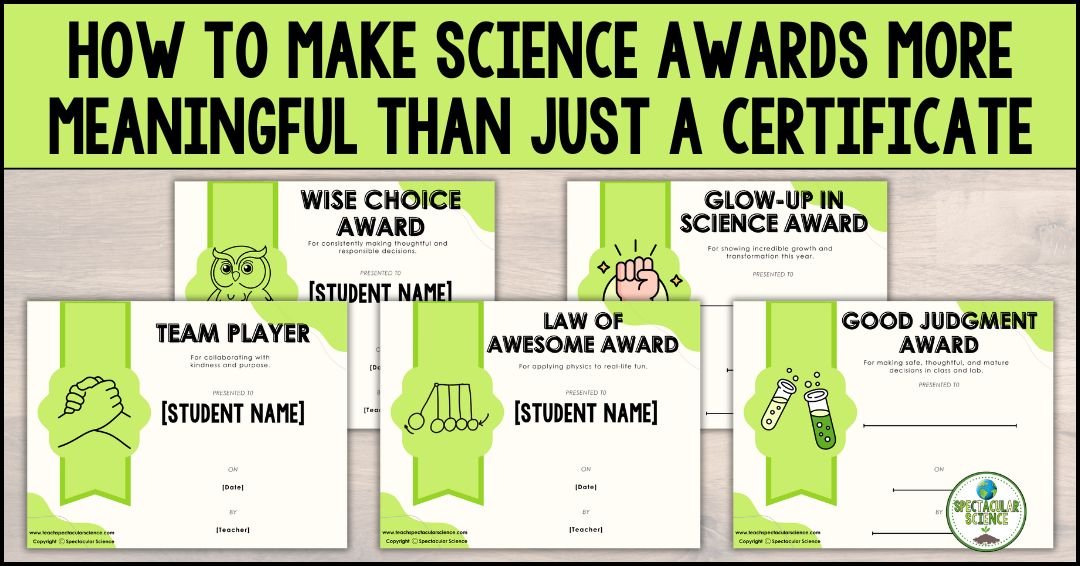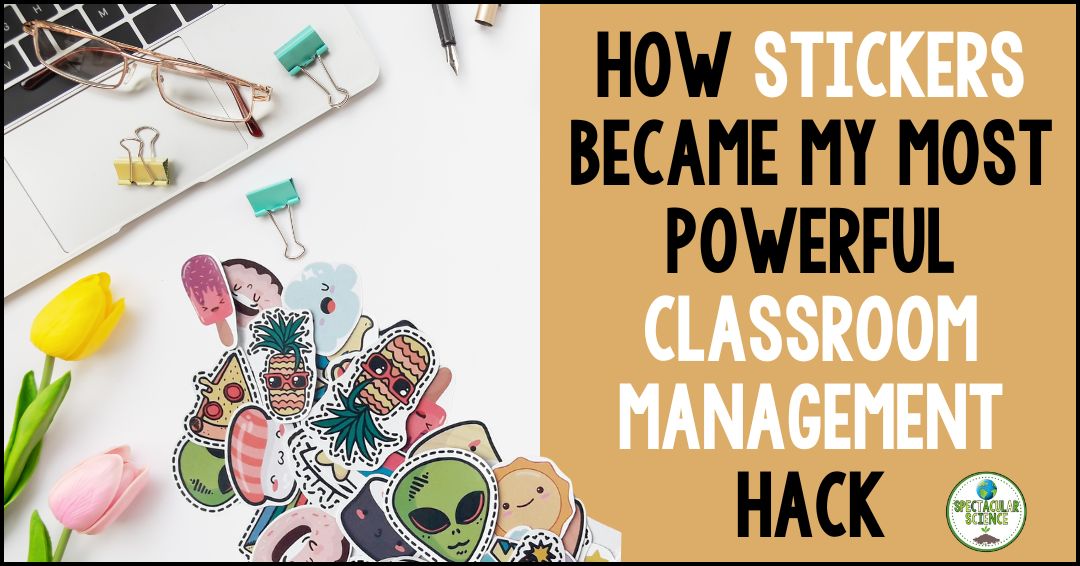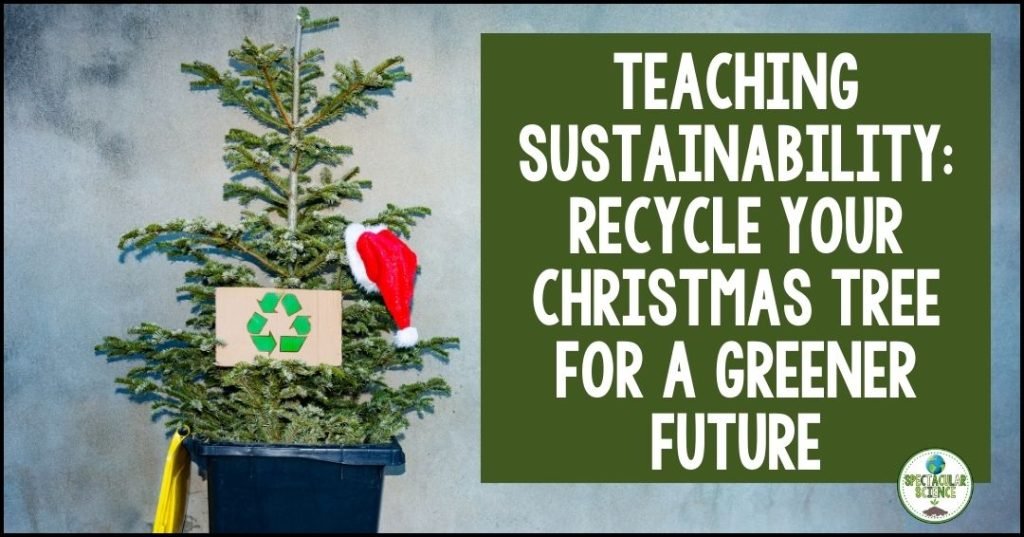
Do you recycle your Christmas tree? If your answer is “no,” fear not – you’re in the right place!
The holiday season is a time of joy, celebration, and giving. As educators, we have a unique opportunity to instill the values of sustainability and environmental consciousness in our students. One impactful way to do so is by discussing the importance of recycling Christmas trees. Let’s explore why recycling matters and provide practical tips for teachers to engage their students in this eco-friendly endeavor.
Looking to include the holidays in your science classes? Check out this post with 12 teaching science resources and lesson ideas for middle school science and high school science.
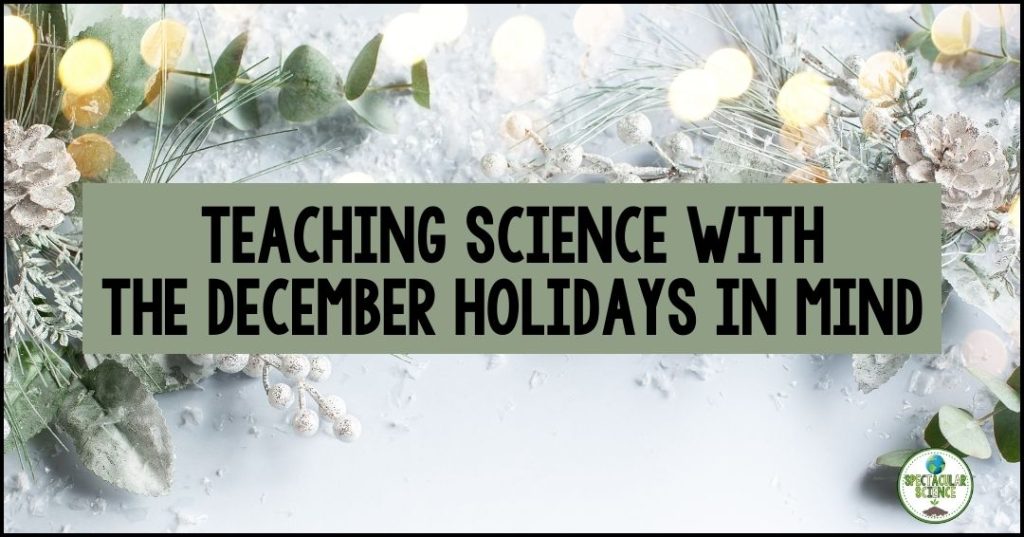
Why Recycle your Christmas Trees?
Environmental Stewardship: Recycling Christmas trees is a tangible way for students to contribute to environmental conservation. By diverting trees from landfills, we reduce the environmental impact of waste disposal and promote a culture of responsible resource management.
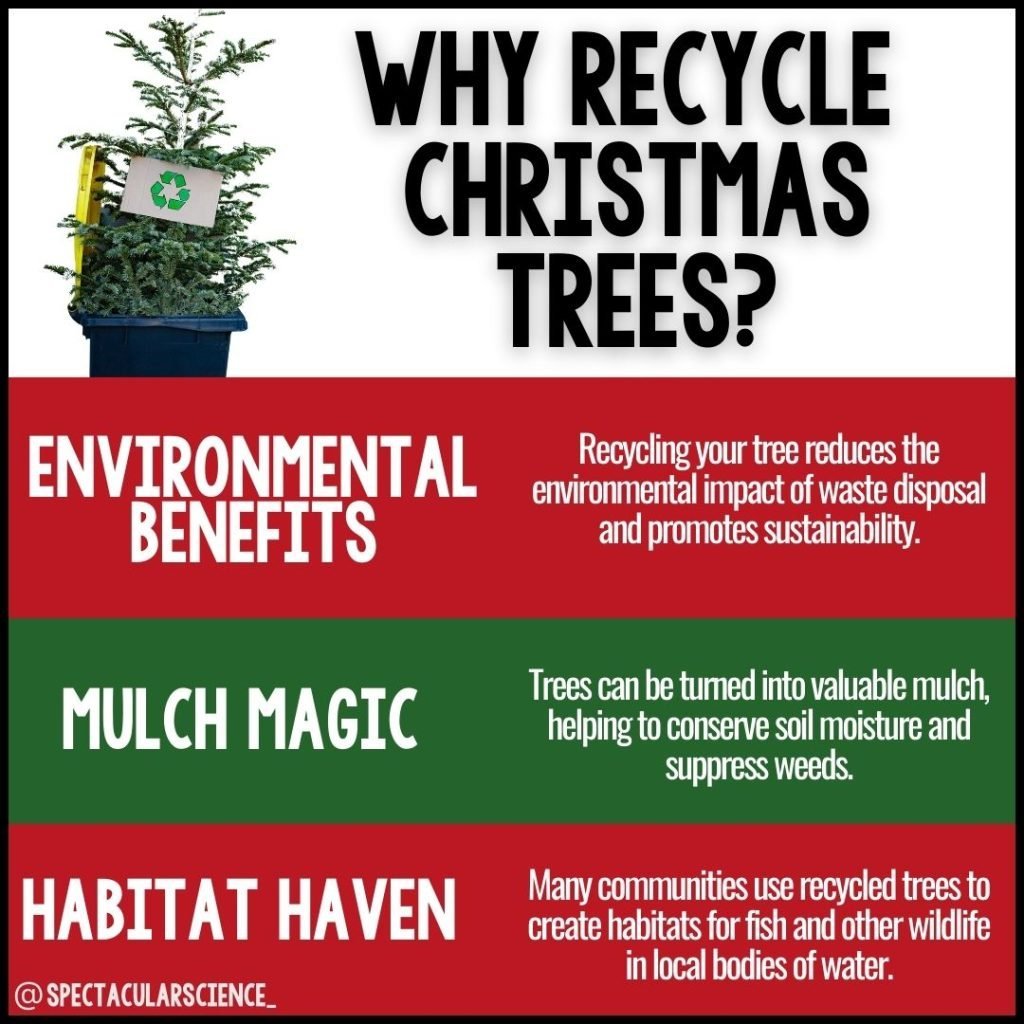
- Environmental Benefits: Recycling your tree reduces the environmental impact of waste disposal and promotes sustainability.
- Mulch Magic: Trees can be turned into valuable mulch, helping to conserve soil moisture and suppress weeds.
- Habitat Haven: Many communities use recycled trees to create habitats for fish and other wildlife in local bodies of water.
How to Recycle Your Christmas Tree:
- Curbside Collection: Check with your local waste management or city services for curbside tree collection programs or organized tree drop-off events, making it easy to recycle your Christmas tree. These events are often coordinated in cities where curbside pickup isn’t available. Be sure to check city and county listings for event details. Additionally, consider contacting certain Home Depot stores, as they may host tree collection events in specific locations. Reach out to your nearby store to inquire about any scheduled events and participate in efforts to recycle your Christmas tree responsibly.
- Mulching Programs: Some areas have drop-off locations where trees are chipped into mulch, which you can often take home for your garden.
- Community Cleanup Events: Join or organize a community cleanup event where volunteers chip in to recycle trees together.
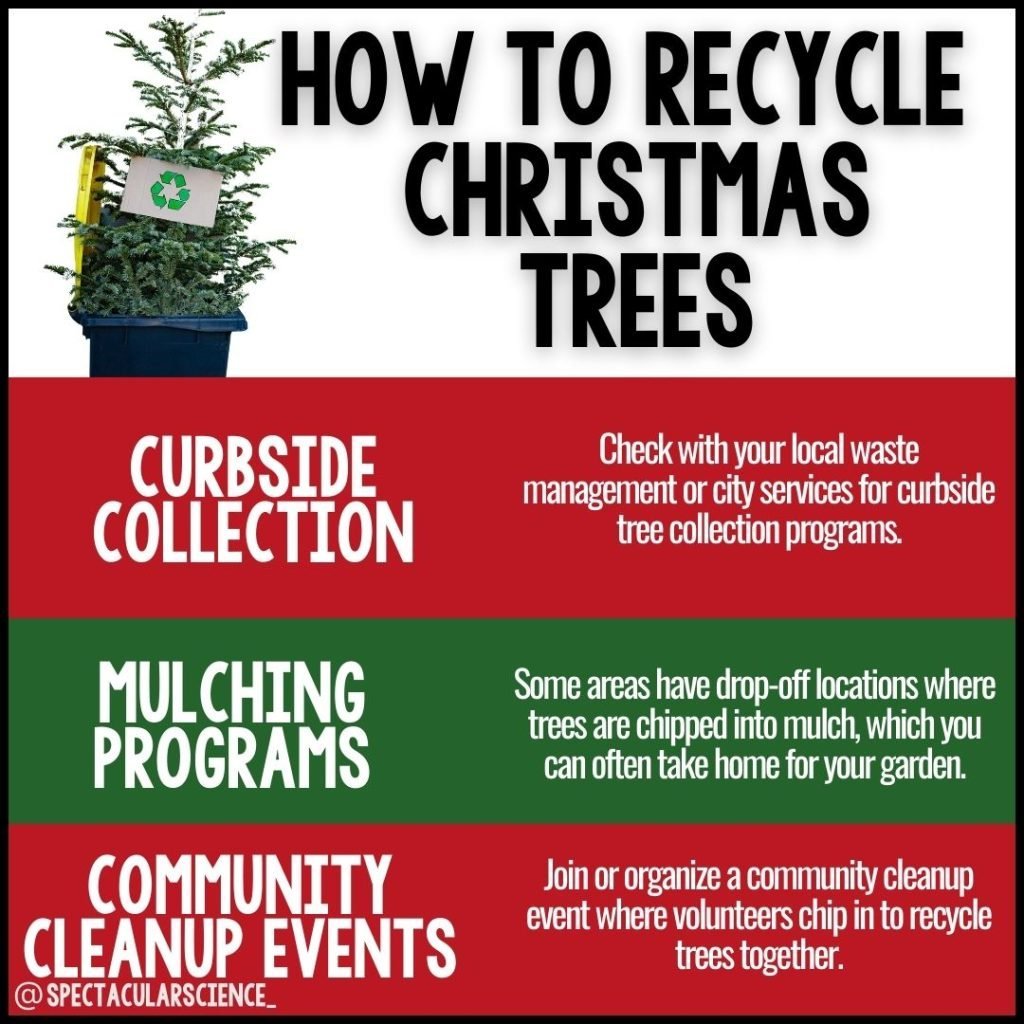
Important Tips:
- Remove Decorations: Be sure to remove all decorations, lights, and ornaments before recycling.
- Flocked Trees: Some recycling programs may not accept flocked trees due to the chemicals used in the flocking process. Check with your local program for guidelines.
How to Incorporate Tree Recycling in the Classroom:
- Research and Presentations: Assign students research projects on the environmental impact of Christmas trees and the benefits of recycling. Encourage them to present their findings to the class, fostering public speaking skills and reinforcing the importance of informed decision-making.
Love this idea? Then you will want to check out The Impact of Christmas Trees Activity to infuse the spirit of the season into your classroom.
2. Art and Creativity: Infuse creativity into the lesson by incorporating art projects related to recycling. Challenge students to create artwork using recycled materials or design informative posters promoting tree recycling. This approach combines artistic expression with environmental education.
3. Community Outreach: Engage with local waste management authorities or environmental organizations to organize field trips or virtual presentations. Allow students to interact with professionals in the field, deepening their understanding of waste management processes.
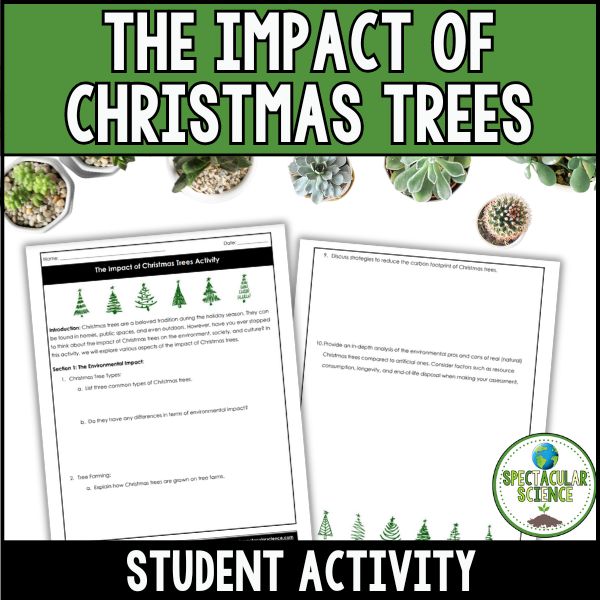
Tips for Teachers:
- Integrate Cross-Curricular Learning: Connect tree recycling to various subjects such as science, geography, and art to demonstrate the interdisciplinary nature of environmental stewardship.
– Science and Ecology: Dive into the science behind tree growth and decomposition. Explore how recycled Christmas trees can be repurposed into valuable resources such as mulch. Conduct experiments on soil health using mulch and discuss the interconnectedness of ecosystems.
– Geography and Environmental Impact: Examine the environmental impact of Christmas tree cultivation and disposal globally. Investigate the carbon footprint associated with transporting trees to different regions. Students can create maps illustrating the distribution of Christmas tree farms and recycling centers, fostering a geographical understanding of the issue.
– Mathematics and Data Analysis: Turn recycling into a mathematical adventure. Have students collect data on the number of recycled trees in your community, create graphs to visualize the impact over time, and calculate the reduction in carbon emissions. This hands-on approach not only enhances math skills but also provides a tangible connection to environmental responsibility.
– Language Arts and Communication: Develop students’ communication skills by assigning writing projects or speeches on the importance of recycling Christmas trees. Encourage creative writing by having students draft persuasive letters to their families, urging them to participate in tree recycling initiatives. This not only hones language arts skills but also empowers students to be effective advocates for environmental causes. - Set an Example: Lead by example. Consider sharing your own efforts to recycle your Christmas tree and encourage students to do the same. This personal touch can inspire students to take action.
- Use Social Media for Good: Create a classroom hashtag to document and share students’ tree recycling initiatives on social media. This not only amplifies their efforts but also contributes to a broader conversation on sustainability. #recycleyourchristmastree
more holiday activities for your science classroom
Looking for more science lessons that focus on aspects related to the holiday season? Check these out:

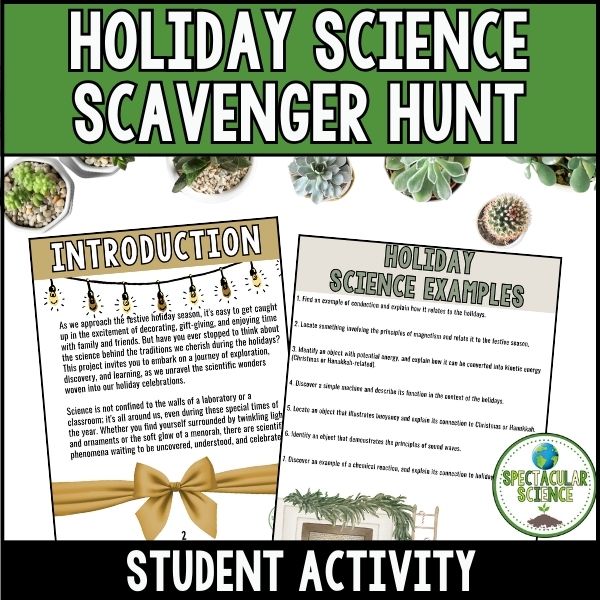
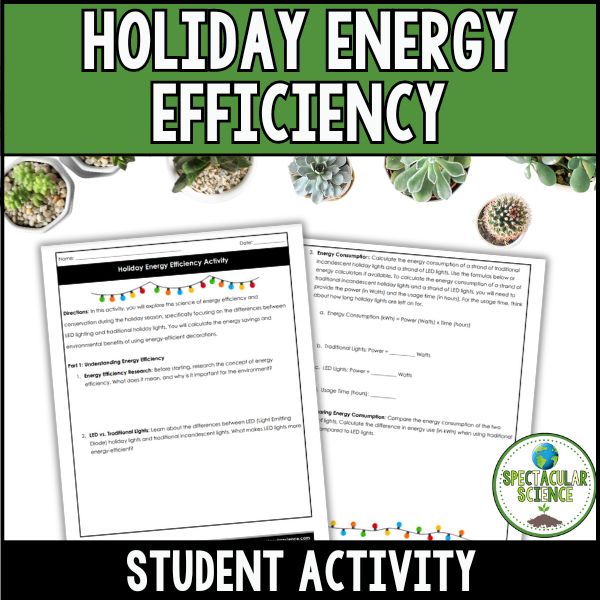
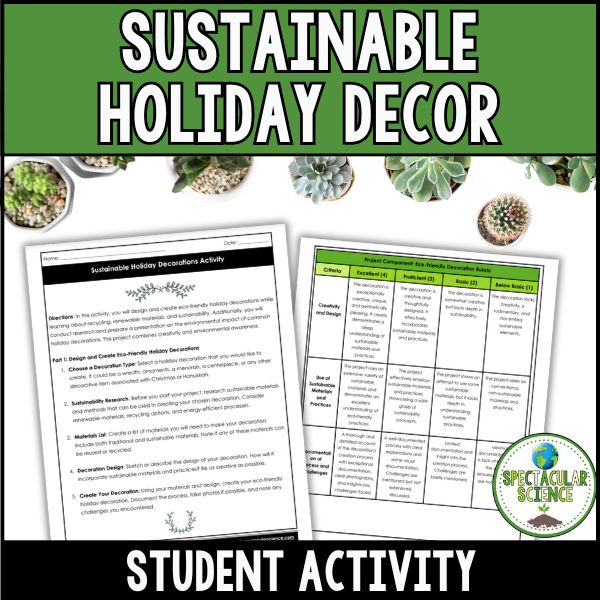
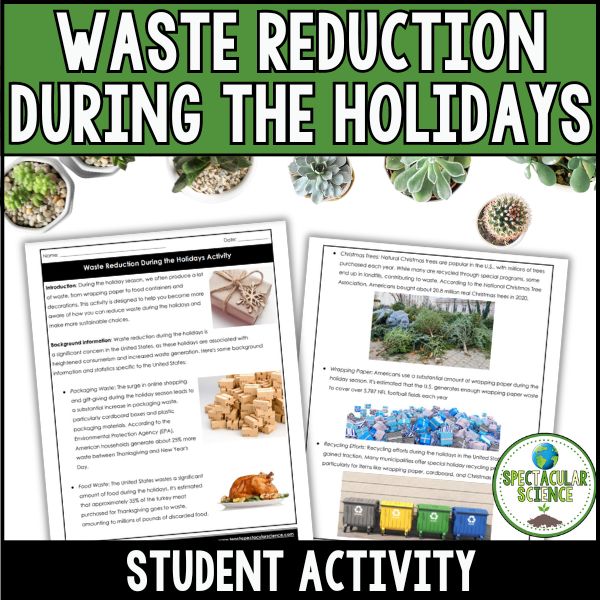
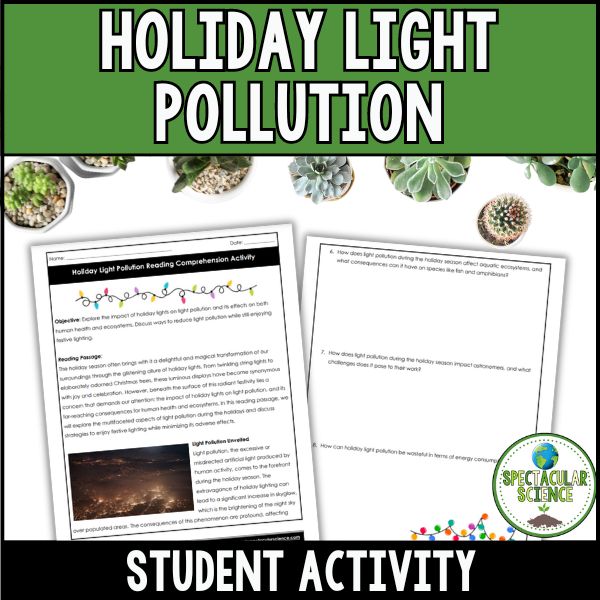
Final Words
As teachers, we play a vital role in shaping the values and behaviors of the next generation. By incorporating discussions on how to recycle your Christmas trees into classrooms, we empower students to make a positive impact on the environment and instill in them the importance of sustainable practices. Together, let’s create a greener and more environmentally conscious future.















